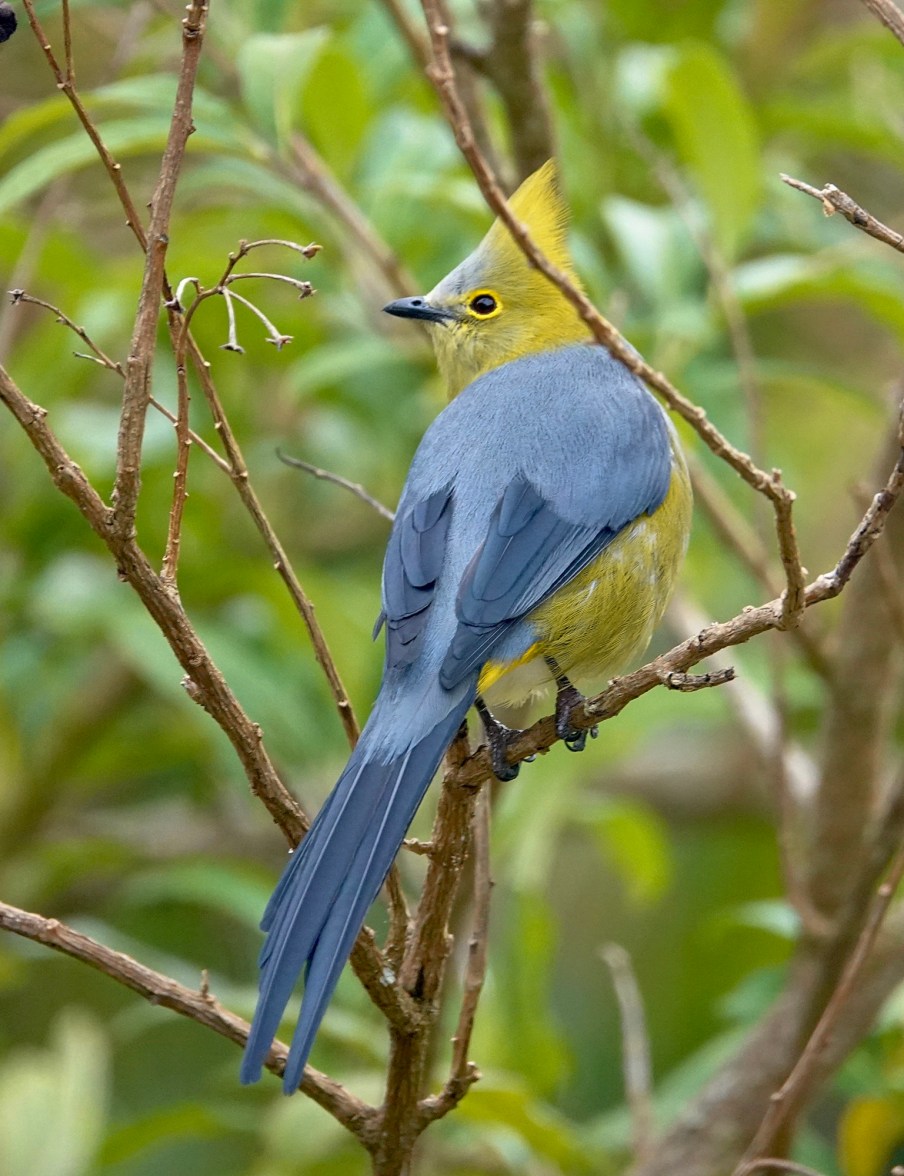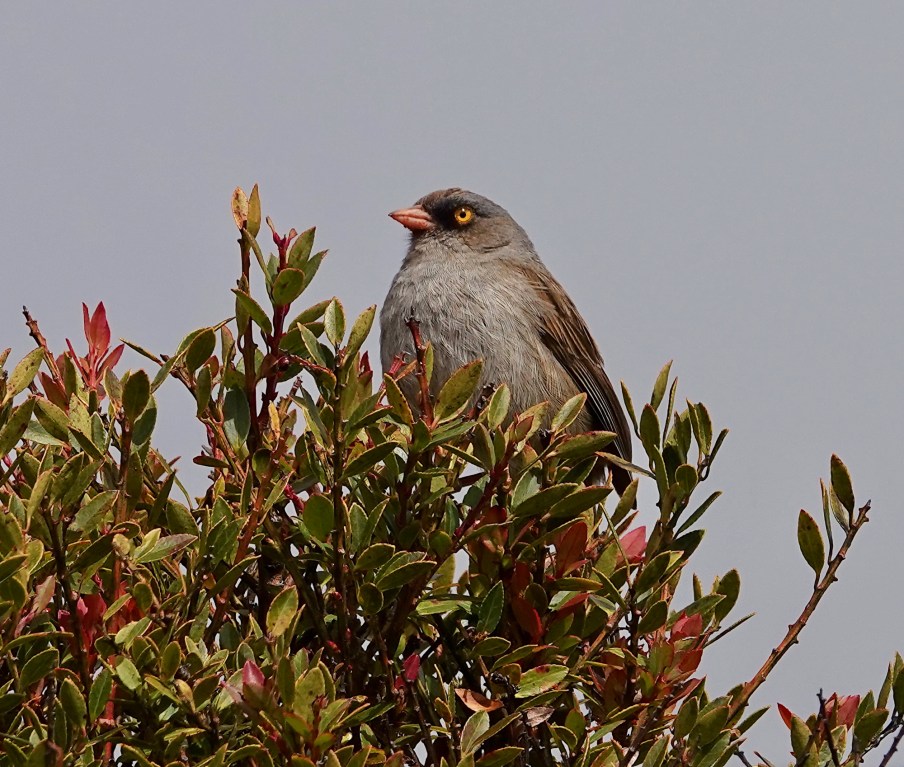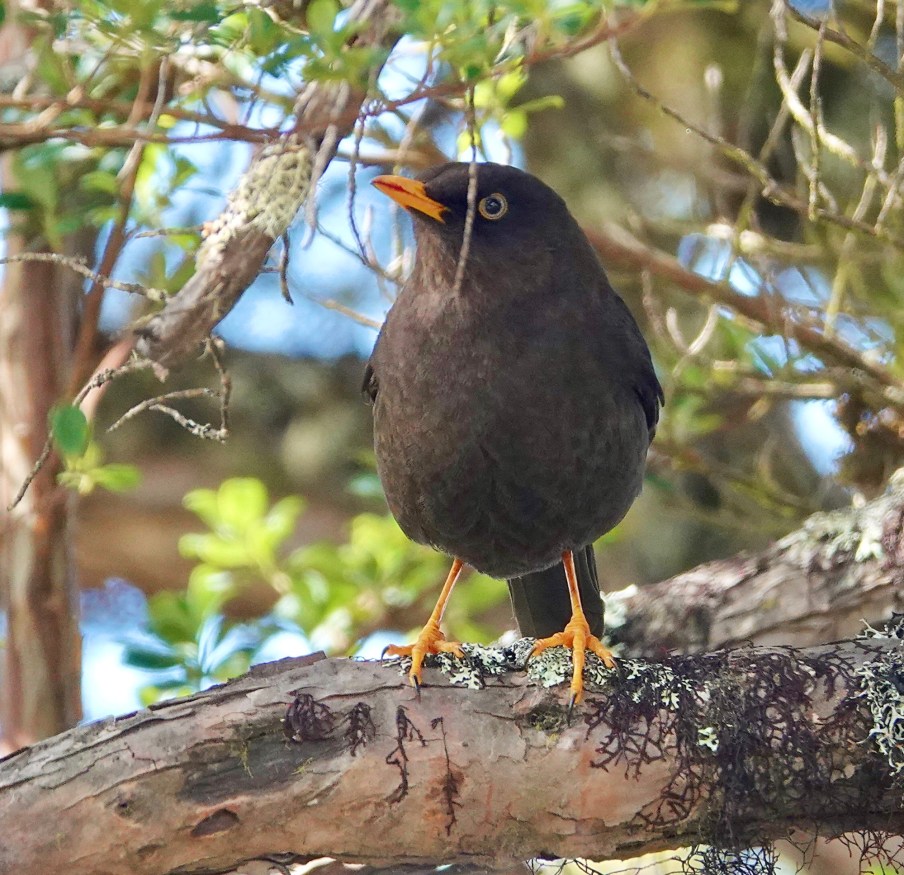Monthly Archives: February 2022
Torrent Tyrannulet



Torrent Tyrannulet: Savegre River below Savegre Mountain Hotel, Reserve, and Spa, San Geraldo de Dota, Costa Rica — There are 11 species of Tyrannulets in Costa Rica…Tyrannulet is apparently just the name for any small bird in Tyrant Flycatcher family…which runs to 9 pages in the Birds of Costa Rica field guide. The Torrent, is, of course, the only one that feeds on the rocks and margins of rushing mountain streams, as you might guess from its name. You might mistake it for an American Dipper, the only other bird that shares this particular habit, or for a Black Phoebe with you sometimes see on the rocks of a stream like the Savegre, but it is unique enough so that it is easily recognized. We followed this one up the stream a ways before I got decent shots of it. Sony Rx10iv at 595 and 600mm. Program mode with my custom birds and wildlife modifications. Processed in Pixelmator Photo and Apple Photos. ISO 640 and 500 @ f4 @ 1/500th. + 1EV exposure compensation. Stream shot: iPhone SE.
Slaty Flowerpiercer




Slaty Flowerpiercer: Savegre Mountain Hotel, Reserve and Spa, San Geraldo de Dota, Costa Rica — This is my second post for the Slaty Flowerpiercer. The previous post featured close-ups of the female and one distant shot of the male, taken at Batsu Gardens on the mountainside above Savegre Hotel. This is the all male review…though it is all the same male, and we found him right on the grounds of the Hotel. You can see the flower-piercing beak very well in these shots and from several angles. 🙂 I was very happy to get these shots, as the Flowerpiercers are highly active birds and rarely pose. The Slaty is the only Flowerpiercer in Costa Rica, though there is one other species in Central America (the Cinnamon-bellied from Mexico and northern Central America) and 18 total, mostly in the Andean highlands of South America. Sony Rx10iv at about 500mm equivalent (I was really close to this bird). Program mode with my custom birds and wildlife modifications. Processed in Pixelmator Photo and Apple Photos. ISO 1250 and 1000 @ f4 @ 1/500th. + 1EV exposure compensation.
Long-tailed Silky-flycatcher



Long-tailed Silky-flycatcher: Savegre Mountain Hotel Spa and Reserve, San Geraldo de Dota, Costa Rica — The Long-tailed Silky-flycatcher is a mostly fruit eating bird of the canopy in the highlands of Costa Rica, ruth up to timberline…but you can see it at eye-level when it is feeding on low growing fruit. Despite its common name, it is more closely related to thrushes and waxwings than it is to true flycatchers. These were seen on the grounds of Savegre Hotel, and down along the river near the lodge. Sony Rx10iv at about 600mm equivalent. Program mode with my custom birds and wildlife modifications. Processed in Pixelmator Photo and Apple Photos. All f4 @ 1/500th. 600mm, ISO 1250, + 1EV; ISO 800, + 1EV; Multi-frame noise reduction equivalent ISO 3200.
White-throated Mountain Gem


White-throated Mountain Gem: Savegre Mountain Resort and Reserve, San Geraldo de Dota, Costa Rica — I shared this same bird from Paraiso Quetzal Lodge at 10,000 feet, which we visited on our way up to San Geraldo de Dota, but we found this one on the grounds of Savegre Lodge at about 7500 feet a little further down the Pacific slope. It is a highlands hummer, but more associated with the cloud-forest than with the paramo. The other Mountain Gem of Costa Rica, the Purple-throated Mountain Gem, is a bird of the foothills and lower slopes. This bird is sometimes called the Grey-tailed Mountain Gem to differentiate it from the sub-species of Mountain Gem from Western Panama. Sony Rx10iv at 600mm equivalent. Program mode with wildlife modifications and multi-frame noise reduction. Processed in Pixelmator Photo and Apple Photos. ISO 4000 and 2000 @ f4 @ 1/500th. +1 EV exposure compensation.
Stripe-tailed Hummingbird


Stripe-tailed Hummingbird: Savergre Mountain Resort, San Geraldo de Dota, Costa Rica — This is another bird that is, in my opinion, “under-named.” I can think of so many more apt and flattering names than Stripe-tailed Hummingbird. And, honestly, the stripe on the tail is the last thing you are likely to notice about this bird. It’s “tell” (the memorable thing about it that is key to your recognition) is the rufous patch on the wings, and on the male, the bright green head and belly. It is not a common bird, but I generally see at least one on every trip to the Talamanca Mountains. This one was on the grounds of Savegre Mountain Resort. Sony Rx10iv at 547mm equivalent. Program mode with my custom birds and wildlife modifications. Processed in Pixelmator Photo and Apple Photos. ISO 640 and 1250 @ f4 @ 1/500th. +1 EV.
Volcano Hummingbird


Volcano Hummingbird: Cerro Buenavista, Talamanca Mountains, Costa Rica — I have seen Volcano Hummingbirds at lower elevations…down to about 8000 feet, but I found this one in its “native” habitat, above tree-line on the paramo of Cerro Buenavista at 11,400 feet, where there were quite a few around the parking area. I have to think they are pretty common at that elevation. The only other hummer that goes that high is the Fiery-throated, though the Fiery-throated is more common just below tree-line. The Volcano is a tiny hummingbird, half the size of a Fiery-throated, which is about the size of our Ruby-throated, and a quarter of the size of the Talamanca which it shares territory with in the Cloud Forests. Sony Rx10iv at 600mm equivalent. Program mode with my custom birds and wildlife modifications. For the second shot I had time to add some exposure compensation: +1…but after post processing it did not seem to matter. Processed in Pixelmator Photo and Apple Photos. ISO 160 and 125 @ f4 @ 1/500th.
Volcano Junco


Volcano Junco: Almost every birder who visits the paramo in Costa Rica wants to see the Volcano Junco, and not because it is the only Junco in Costa Rica. Mostly they want to see it because it is one of the few birds exclusively limited to the area above tree line, so its range in Costa Rica is very limited. It is not endemic to Costa Rica, but almost. You can see it on the highest peaks in Northern Panama, just over the border. Fortunately it is very easy to see (unlike the other iconic bird of the paramo, the Timberline Wren which can be very elusive). If you drive up to the top of Cerro Buenavista and park under the first antennas you are likely to see one as soon as you get out of the vehicle…feeding on the ground or in the bushes around the buildings there. There have been days when I have visited that were so bad…cold, windy, and misty, with a visibility of just a few yards…that the Volcano Junco was the only bird we saw on the paramo, but we have always seen at least a few. Sony Rx10iv at 320mm equivalent. Program mode with my custom birds and wildlife modifications. Processed in Pixelmator Photo and Apple Photos. ISO 100 @ f6.3 and 4.5 @ 1/1000th.
Sooty Thrush

Sooty Thrush: Cerro Buenavista, Talamanca Mountains, Costa Rica — Cerro Buenavista at 11,453 feet, is not the tallest mountain in Costa Rica, but it might well be the tallest you can drive to the top of. It is just off the Pan-Am Highway south of Los Quetzales National Park and the turn down into San Geraldo de Dota and its lodges. There is an array of antennas on top of the mountain, and the service road gives about the best access to the Paramo you could want. It is a regular stop on my trips to the Costa Rica, and I am sure, on many other birding trips as well. The Sooty Thrush is not restricted to the paramo (the short grass, bamboo, and shrub habitat above tree-line in the tropics) but it is common there (and down as low as the lower edge of the humid (cloud) forest). This one was waiting for us when we hopped out of the bus for our first “scenery” break on the mountain. On a clear day, you can see both the Caribbean and the Pacific from the top of Buenavista, and of course it is the place to look for Paramo speciality species like the Volcano Junco and Timberline Wren. Not that we were not delighted with our first bird there! Sony Rx10iv at 600mm equivalent. Program mode with my custom birds and wildlife modifications. Processed in Pixelmator Photo and Apple Photos. ISO 640 @ f4 @ 1/500th.
A tale of three male Quetzals



Resplendent Quetzal: San Geraldo de Dota, Costa Rica — The Resplendent Quetzal is, of course, the main attraction in the highland forests of Costa Rica. It is a stunning, relatively large, and almost impossibly beautiful, bird. Everyone wants to see it, and those who have seen one, want to see another. On our first December trip to Costa Rica last year, on our first morning in the mountains, we were up at 5 am, and on the bus by 5:30, for our first try at a Quetzal. We saw one. A single male flew into the wild avocado tree where it had been feeding at the time, and sat for maybe 5 minutes, just at dawn. Then it flew off, and did not re-appear in the time we had before breakfast at 7:30. Enough to say we had seen it, but not enough to satisfy. So on the second morning in the mountains, we were up again and on the road even earlier. The wild avocado trees do not all flower and fruit at the same time. Generally there will be only a few trees in the Savegre Valley in fruit on any given day, so finding the Quetzals is a matter of knowing which trees have fruit. A fruiting tree, if it is along the road where it is easy to get to, can attract 100s of birders and tourists from the lodges all up and down the valley each morning who are eager to see the Quetzal. It is also a waiting game. If you get there early you wait for the first bird to fly in. If you leave right after that, you take the chance of missing the real show. Our guide insisted that we wait, and indeed, as the sun crept down the slopes above us, two more male Quetzals flew in. It might have been hard to tell that we were seeing three different birds, but each of these males had different length “tail streamers” (the tail streamers are actually coverts…normally small feathers that grow from and cover the base of the true tail). Male Quetzals lose the covert streamers during nesting season as they fly into and out of the cavity nest, tending young, and have to grow them out each year, so the length of the streamers is a good indication of how recently the birds have nested. These three were clearly on different nesting cycles. Long, medium, and short. Sony Rx10iv at 600mm equivalent. Program mode with wildlife modifications and multi-frame noise reductions. Processed in Pixelmator Photo and Apple Photos. Equivalent ISO 6400 and 5000 @ f4 @ 1/500th.
Chlorophonia

Golden-browed Chlorophonia: Batsu Gardens, San Geraldo de Dota, Costa Rica — I may have told this story before, but on our first trip to Costa Rica this past December, we had a glimpse of a Golden-browed Chlorophonia, wee and far, in the canopy while hiking, and I, somewhat rashly, promised Dave (an avid birder and bird photographer) that I would show him one close up the next day when we visited Batsu Gardens on the mountain side above Savegre Resort. When we got in the van that takes you up to the gardens, I asked the owner if the Chlorophonia was coming to the feeders, and he said, “Some days”. Hum. So we sat there on the viewing platform all afternoon, watching and photographing hummingbirds, tanagers, finches, and toucanets. We were beginning to lose the light, and Dave had wandered off looking for photo-ops in the larger garden. I was beginning to think I was going to have to eat my words. And then suddenly, the Golden-browed Chlorophonia was there on the feeding station. Dave. Dave. DAVE! Chlorophonia. CHLOROPHONIA! I finally yelled. Dave came. We saw the Chlorophonia. We photographed the Chlorophonia. Whew. Close one. On the next trip I did not promise anyone anything, but we did see the Golden-browed Chlorophonia at Batsu again. And it is certainly a bird worth seeing. Such a bright little bird and such a striking color combination. Sony Rx10iv at 600mm equivalent. Program mode with my custom birds and wildlife modifications. Processed in Pixelmator Photo and Apple Photos and assembled in FrameMagic. ISO 640 @ f4 @ 1/500th.